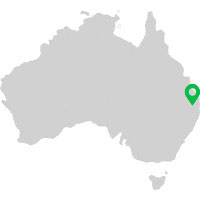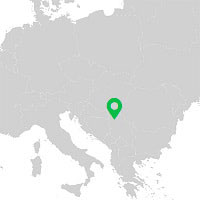

Black hat SEO is a completely different approach to increasing search engine rankings. It relies on trickery and deception to reel users or search engines in, while not featuring any interesting or original content. Most companies should avoid this kind of SEO if they want their websites to actually attract users.
These are websites that use hyperlinks to artificially increase their search engine rankings. These links aren’t created for the purpose of increasing traffic to the aforementioned websites, but rather to trick search engines into thinking that the website is being shared often by other pages. This creates a fake picture of the popularity of their website, without actually showing anything for it.
This method is used because search engines use these kinds of links to determine the quality and popularity of the website being linked to. A larger number of links from high-quality websites can boost rankings by a significant amount.
Search engines have taken measures to prevent this. Nowadays, not all links are given the same weight. Only links from high-authority websites are considered of value, to combat this kind of link spamming.
Keywords are an essential part of SEO. Getting the right kind of words in the content of your pages and their titles will increase the chance of people stumbling upon them. During searches, a search engine will weigh pages based on how many of the search query’s words match.
Some website owners have noticed this phenomenon and they try to emulate the real effects of proper keyword placement by using as many keywords as possible. They effectively stuff their pages with as many hidden keywords as they can.
These websites often have no actual content displayed on their pages. They are just amalgamations of keywords that serve no purpose other than increasing traffic.
Luckily, search engines have adapted to keyword stuffing and penalize this practice. If a page is found to be over-utilizing specific popular keywords, it’s going to be bumped lower in terms of search rankings.
Cloaking is an interesting method that deceives both search engines and users alike. Search engine crawlers are shown a specific page, while the user is shown a completely different set of contents.
This method has various forms. In one example, the website could use specific keywords, titles, and descriptions for its website while displaying something different when it comes to the actual content of the page.
Using this method, search crawlers and indexing algorithms are going to recognize the website as something that users might find useful, while the content might be used to simply generate traffic or display advertisements.
If the cloaking methods are detected by the search algorithm or reported by users, it will lead to a definitive ban for the website.
This is another method that uses links to artificially generate popularity. It involves two parties. There is a website that purchases links for itself, while the other website posts those same links on their own pages. For a fixed price, the website purchasing links will get an increase in click frequency and traffic from the other website, while also telling search engines that their links are higher in authority than they really are.
Two websites can form a mutually beneficial deal by sharing each other’s links. This works the same way, but without money ever having to exchange hands. The paper trail is smaller, but the effect is still the same.
Search engines like Google forbid excessive link exchanging because it is a clear manipulation of their TOS. This doesn’t mean legitimate website can’t cooperate with the intent of sharing legitimate content within their blogs.
This is a relatively simple method that shady websites love to utilize. It uses a tool to take content from websites that are featured on the same page of the search results. This content is then featured on the website that uses the tool, while not actually being from that website. This kind of content stealing is very quickly noticed by search engines and the websites in question receive immediate bans.
Blogs are a great way to get interesting and informative content shared. You will find that almost every modern website has a blog that features relevant content which helps build brand awareness and helps users with any questions they might have.
Blogs are designed to be shared organically by users on different social media websites or directly by posting them on websites. Website creators have taken note of this, but they occasionally try to take things into their own hands.
You might see comments on websites that show enthusiasm for a certain blog, followed by showing a lot of links for the website and blog. This is quite clearly spamming for the purpose of creating a lot of backlinks.
Search engines don’t favour this kind of behaviour, and neither do the people. If it is done with massive spambots and distribution tools, it could lead to lower rankings.
Some websites use a slightly less malicious version of spamming links. They will create a blank website with no actual content featured. Users won’t hang around for long on these websites, but they will receive a lot of traffic due to the hidden links and keywords in the background. These websites often match the colour of the background with the colour of the text that is hidden, making it impossible for users to see it. Search engines and crawlers won’t miss it and they will show the website to search queries, at least until the website is banned.
These pages are created with the express intent of tricking search engines into thinking this is the actual page. When users visit a doorway page, it immediately redirects them to a completely different page that shows other kinds of content.
The fake page is often made in order to attract the user with promises of the content they were looking for, while the fake page displays what the creator actually wanted to feature. These websites don’t last long when they are detected by search engines.
Evidently, there are a lot of things to pay attention to with black hat SEO, but with the right tips, you’ll be able to handle all of them properly. SEO will once again be your most powerful asset and you’ll be able to use it for all the grand plans you have.


How to Develop a Unique Digital Marketing Strategy for E-Commerce


How to Generate Traffic from Facebook Page








Dunavska 13
21000 Novi Sad, Serbia